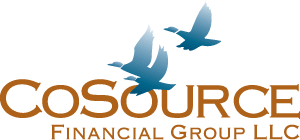Know the Difference between a Traditional 401(k) and a Roth 401(k)
At CoSource Financial Group, we work with dozens of business owners and HR directors who are familiar with the differences between traditional 401(k) plans and Roth 401(k) plans, but the participants in the plans are typically not as acquainted with the latter. We pride ourselves on not only providing participant education about the benefits of enrolling in a workplace retirement plan, but we also spend our time educating employees about the differences between—and benefits of—the two plans.
Since January 1, 2006, employers have been allowed to offer employees access to Roth 401(k) plans. And starting in 2023, retirement rules were updated to allow more retirement plans the ability to offer Roth contributions.[1]
As the name implies, Roth 401(k) plans combine features of 401(k) plans with those of a Roth IRA. With a Roth 401(k), contributions are made with after-tax dollars—there is no tax deduction on the front end—but qualifying withdrawals are not subject to income taxes. Any capital appreciation in the Roth 401(k) also is not subject to income taxes.
For some, the choice between a Roth 401(k) and a traditional 401(k) comes down to determining whether the upfront tax break on the traditional 401(k) is likely to outweigh the back-end benefit of tax-free withdrawals from the Roth 401(k). However, this isn’t an “all-or-nothing” decision. Many employers allow contributions to be divided between a traditional 401(k) plan and a Roth 401(k) plan—up to overall contribution limits.
One subtle but key consideration is that Roth 401(k) plans aren’t subject to income restrictions like Roth IRAs are. This can offer advantages to high-income individuals whose Roth IRA has been limited by these restrictions.
Roth 401(k) plans are subject to the same annual contribution limits as regular 401(k) plans—$23,000 for 2024, $30,500 for those over age 50. These are cumulative limits that apply to all accounts with a single employer. For example, an individual couldn’t save $23,000 in a traditional 401(k) and another $23,000 in a Roth 401(k).[2]
Another factor to consider is that employer matches are made with pretax dollars, just as they are with a traditional 401(k) plan. In a Roth 401(k), however, these matching funds accumulate in a separate account, which will be taxed as ordinary income at withdrawal.
At CoSource Financial Group, we encourage participants to think about what tax bracket they are likely to be in when they retire. If that tax bracket is higher than the one they are currently in, we suggest they invest in the Roth 401(k). If that tax bracket is lower than their current one, we recommend funding the traditional 401(k). If they’re unsure, we encourage them to diversify their investments and split their contributions between both the Roth 401(k) and the traditional 401(k).
Setting money aside for retirement can be part of a sound personal financial strategy. Deciding whether to use a traditional 401(k) or a Roth 401(k) often involves reviewing a wide range of factors. If you are uncertain about what is the best choice for your situation, you should consider working with a qualified tax or financial professional, like those of us at CoSource Financial Group.
[1] Forbes.com, January 5, 2023
[2] IRS.gov 2024
Employees who withdraw funds in a 401(k) plan before age 59½ may have to pay a 10 percent tax on any withdrawals, in addition to any regular income tax. Investments are subject to market risks including the potential loss of principal invested. Past performance is not a guarantee of future results.





